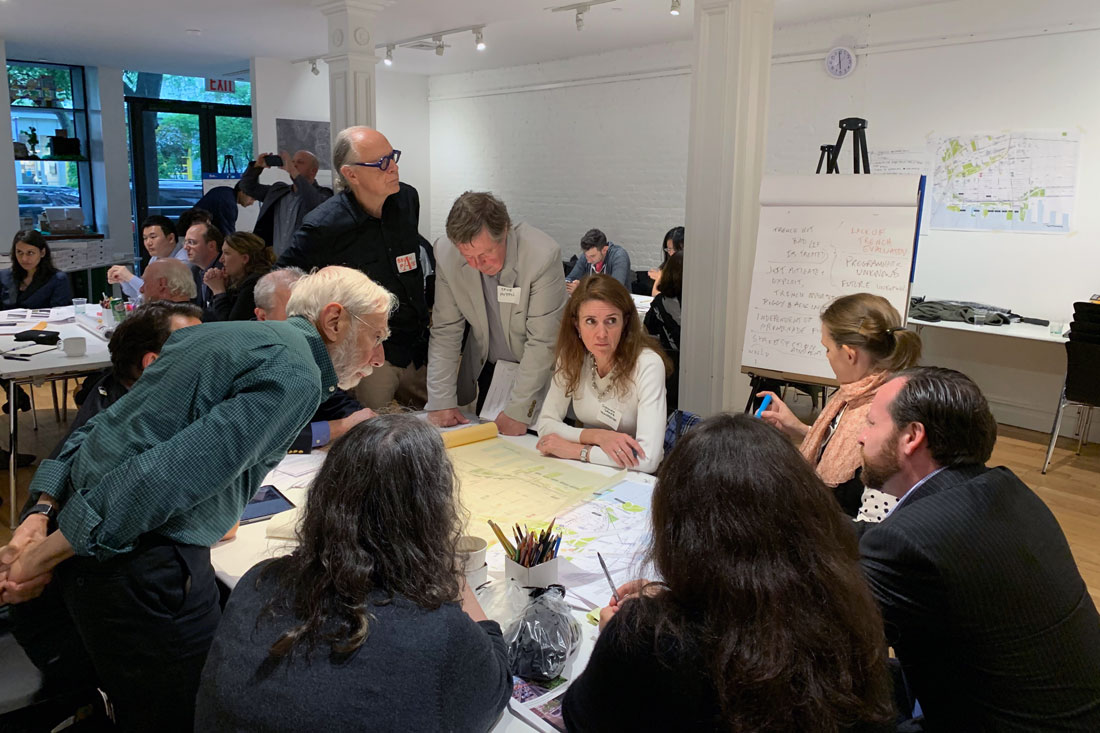by: Adam Roberts
Over the last few decades, the state of the Brooklyn-Queens Expressway’s triple cantilever, the three-level structure running along the edge of Brooklyn Heights containing a northbound level, southbound level, and the promenade, has dangerously deteriorated. The NYC Department of Transportation believes that it will need to eliminate truck traffic from the elevated roadway by 2026, and close it entirely by 2036. The full closure of such an important route, particularly for trucks, could have devastating consequences for the surrounding neighborhoods and regional economic activity.
NYC DOT has proposed building a temporary highway along the Brooklyn Heights promenade, forcing its closure, while a new permanent structure for the Expressway is constructed. This has sparked an outcry among nearby residents, leading to a number of new proposals from neighborhood groups, elected officials, and architects.
Some of the most notable proposals include the following:
- Marc Wouters: On behalf of the Brooklyn Heights Association, architect Marc Wouters has proposed building a temporary highway over portions of Brooklyn Bridge Park, allowing the promenade to be kept open.
- Scott Stringer: The NYC Comptroller has argued that the BQE’s triple cantilever section should be transformed into a truck-only highway, with unused sections being transformed into a linear park.
- Bjarke Ingels Group (BIG): The architecture firm believes the BQE should maintain its current size of six levels, lowering them to street-level and then being decked over. The decked over portions would become parkland connecting the promenade and Brooklyn Bridge Park.
With so many new ideas for the triple cantilever, the Mayor has convened a task force of experts to make recommendations for the structure’s future. Benjamin Prosky, Executive Director, AIANY and Center for Architecture, is among those appointed. AIANY’s Transportation and Infrastructure Committee and Planning and Urban Design Committee held a workshop on Monday, June 10, to evaluate the various proposals for the BQE. They’ll seek to share their insights with the task force and other stakeholders as this important project develops.
Pulse Points:
- On Tuesday, June 18, 8-10am, AIANY is hosting Special Briefing: New York’s Next Comprehensive Waterfront Plan. The program will examine the Comprehensive Waterfront Plan, which outlines the strategic vision of the City’s waterfront for 2020-2030. Speakers include representatives from the NYC Department of City Planning and the Waterfront Management Advisory Board. Register here.
- This current session of the New York State Legislature is ending on June 19. As this has been the first time in a decade that the Democratic Party has complete control of the legislature, legislators are attempting to pass a years-long backlog of policy proposals. Most notable have been those pieces of legislation around rent-reform, which you can read more about here.
- This Thursday, June 13, the Center for Architecture will be opening its Mapping Community: Public Investment in NYC exhibition on the process to fund capital projects. The exhibition will examine how architects interact with city agencies, elected officials, community boards, and other stakeholders.
- At the AIA Conference on Architecture, membership voted on a resolution to
“…prioritize and support urgent climate action to exponentially accelerate the ‘decarbonization’ of buildings, the building sector, and the built environment.”








